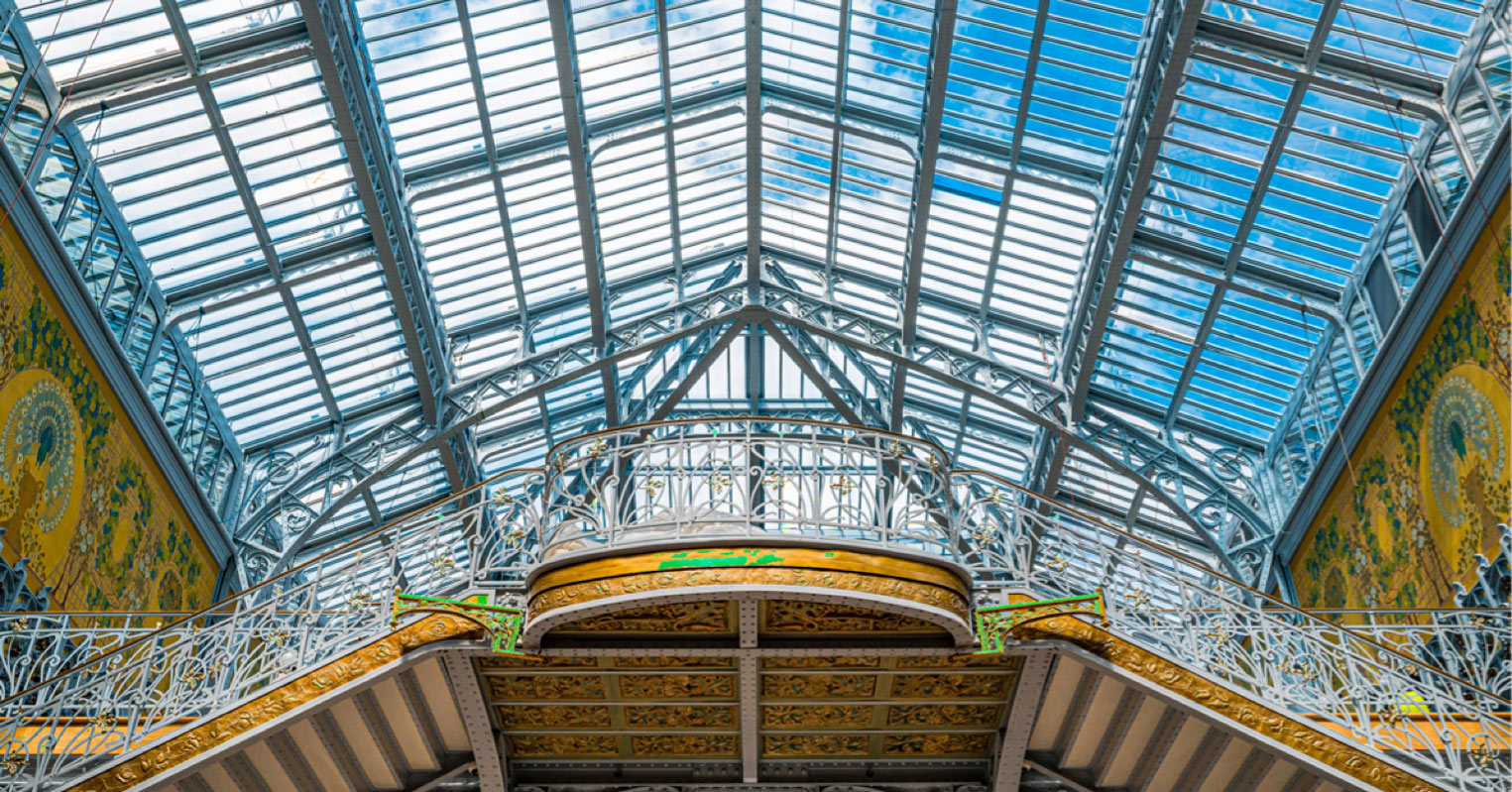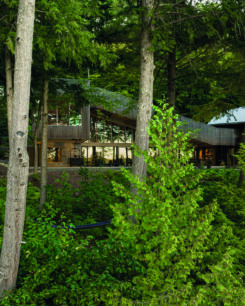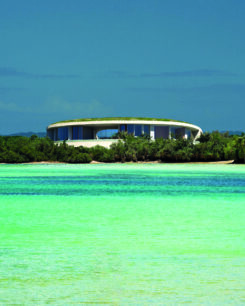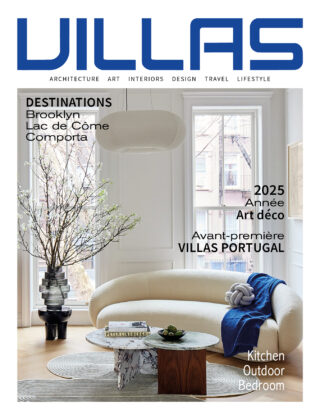Sommaire
More than a shopping mecca
To celebrate the reopening of Samaritaine, French luxury publisher Assouline is launching a richly documented coffee table book that not only recounts the history of the famous department store, but also explains the restoration of the building in detail. However, Samaritaine is much more than just a shopping mecca, it is also an interesting example of Art Nouveau and Art Deco, two artistic and architectural styles that were very much en vogue in Europe at the beginning of the previous century.
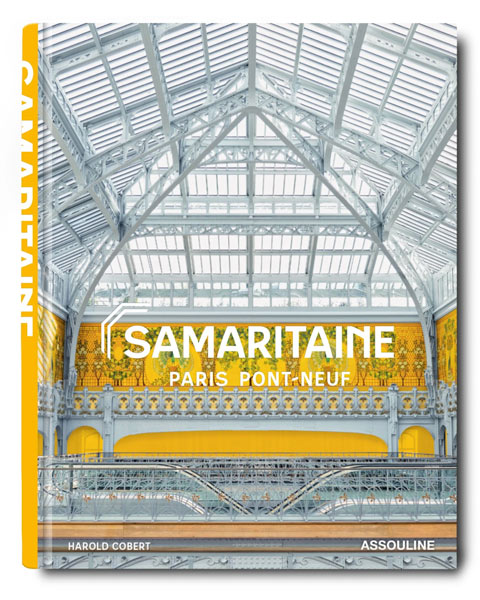
Original design by Frantz Jourdain
At the turn of the past century, architect Frantz Jourdain was commissioned by owners Ernest Cognacq and Marie-Louise Jaÿ to renovate and expand their existing store from the 1870’s. Jourdain was part of several artistic communities that greatly influenced his personal architectural vision and the choices he made for the design of Samaritaine. As president of the Société du Nouveau during the heyday of the Art Nouveau movement, it is not surprising that this revolutionary style is well-represented in his original design.
Juxtaposition between modernity and nature
Art Nouveau is not only characterized by the abundant use of floral motifs, but also by its preference for modern techniques. Architecturally, this is mainly expressed in the use of large glass surfaces and iron arches, elements that are strongly present in Jourdain’s original vision. The skeleton of Samaritaine was constructed out of steel and glass, but the famous facade was covered with enamel tiles in the emblematic bright yellow, green, white and gold. This style was also extended to the interior. The iron staircases, tiled floors and frescoes on the walls featured the typical floral motifs of the Art Nouveau aesthetic.
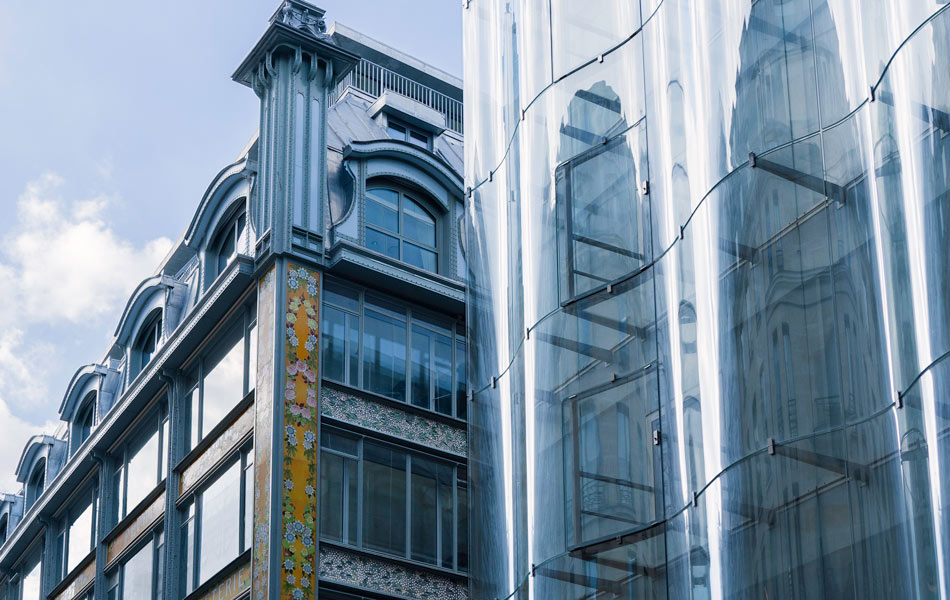
Samaritaine
Art Nouveau in Belgium
Art Nouveau was also considerably popular Belgium. The Ghent architect Victor Horta and Henry Van De Velde are some of the most important representatives of this style. Many of Horta’s designs can still be visited today, such as the Hotel Tassel, considered by many to be the ‘manifesto’ of the Art Nouveau style, the Royal Greenhouses in Laeken and the Centre for Fine Arts (BOZAR). Four Art Nouveau mansions designed by Horta are part of UNESCO World Heritage, including his former home and studio that nowaday houses the Horta Museum.
Art Deco renovation in the 1920’s
But Jourdain’s first renovation turned out to be short-lived. When the building was completed in 1910, the popularity of the Art Nouveau style was already on its last legs. New artistic movements such as Fauvism, Cubism and Art Deco made the design of Samaritaine look dated. During the 1920s, the store was updated in a more fashionable style and further expanded. The glass domes and decorative ironwork had to give way to more geometrical accents and cream-colored stones. This modernisation was a collaboration between Jourdain and architect Henry Sauvage and was completed in 1928. At the end of the construction, Samaritaine consisted of four different department stores and stretched from the Rue de Rivoli to the Quai du Louvre.
A comprehensive restoration
In 2005, Samaritaine had to to close its doors for security reasons. The acclaimed Japanese architectural firm SANAA was commissioned to conduct the renovation, with SRA architectes being appointed as executive architect. The intent of the comprehensive project was to both restore its historic Art Nouveau and Art Deco elements and give it a modern-day update. Today the buildings are not only used as retail space, but several areas have also been converted into offices, a five-star hotel, social housing units and a nursery.
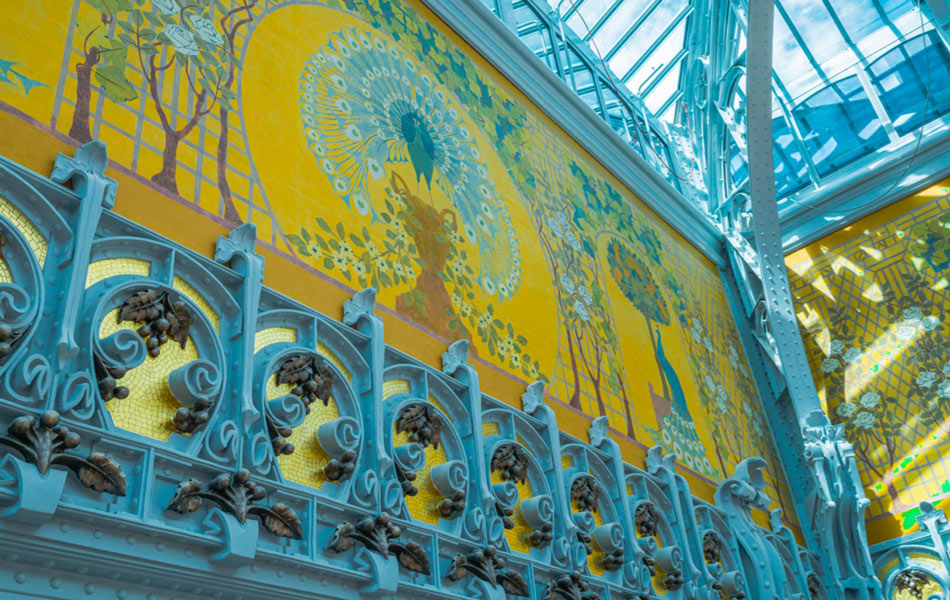
Samaritaine
Contemporary glass façade
In addition to the restoration of the existing structure, SANAA also added some new architectural elements, such as the striking glass facade that revolves around the building and reflects the surrounding buildings. The aim of the artchitects was to unite the historical and the contemporary on the glass surface and thus perpetuate a harmonious relationship between the renovated and newly constructed parts. In addition, the undulating facade refers to the avant-garde vision and research into glass that characterized the work of the original architects, Frantz Jourdain and Henri Sauvage. A new street, baptized the “passage de La Samaritaine, was also created. The street runs throughout the building and connects three courtyards, two of which have glass domes, so that the light can penetrate the interior in a more effective manner.
Bourse de Commerce
Samaritaine is not the only historical icon that has been modernized in 2021. The eighteenth-century Bourse de Commerse was also given a contemporary transformation by a renowned Japanese architect, the Pritzker Prize-winning Tadao Ando. The former stock exchange building now comprises various exhibition spaces that will display numerous works of art from the private collection of owner and art mecenas François Pinault, founder of luxury group Kering.
